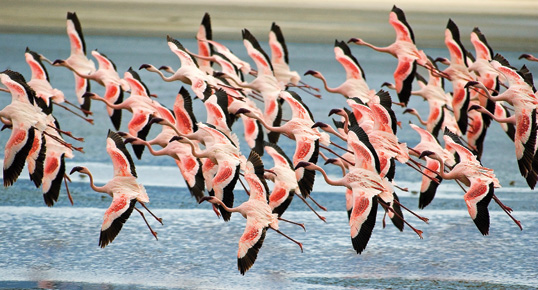News Flash

A flashlight machine is a piece of photographic equipment filled with explosive flash powder used to produce a bright light, which is needed to produce short exposures. Before the development of the electric strobe light in 1931, a flashlight machine would have been used to take what we now call high-speed photographs. It was used to investigate events that happen very fast, such as the brief moment when a galloping horse has all four legs off the ground.
Ashley Zinyk, '03 BSc(Eng)
Edmonton, AB
Spruced Up
I enjoyed the Spring 2011 New Trail. Great article on Spruce Meadows [pg. 24]. What a great job.
Dean McKenzie, '68 BEd
Edmonton, AB
Capital Idea

Keep up the good work. Of the three alumni magazines I receive, New Trail has always been my favourite. It really shows the depth of the U of A student body.
Guy Milner, '74 BA
Courtenay, BC
Editor's Note: Dodoma is the national capital of Tanzania. Tanzania's National Assembly moved to the city in 1996 from the previous national capital of Dar es Salaam. Arusha is the capital of the Arusha region in northern Tanzania. It is a major international diplomatic hub and is host to the International Criminal Tribunal for Rwanda.
Brand Name

The property donated by the Mattheis' should correctly be referred to as being "originally" called the Three Walking Stick Ranch, not "currently" referred to as such.
John Ware, the legendary black cowboy who came up to Alberta on a cattle drive from Texas in 1882, initially established the Three Walking Sticks Ranch. He registered the Four Walking Stick brand (Left Ribs) with the Territorial Government in May 1885 and ran cattle with this unique brand. In 1898 he had the brand revised to the Three Walking Stick, as the original brand proved to be too large.
F. Merritt Chisholm, '52 BCom
Sidney, BC
For more on the Three Walking Sticks Ranch click here.
Another Africa
Today I received the Spring 2011 issue of New Trail, with Lyndsay Hobbs' article about her experience in Tanzania. I think you'll find many U of A connections in East Africa. Here's mine: I travelled to Kenya in the summer of 2009 as a volunteer with Education Beyond Borders (www.educationbeyondborders.org). Our mandate is to engage, educate and empower teachers in developing countries. For the past three summers, teams of teachers from Canada and the United States have worked with teachers in remote rural regions of Kenya to develop strategies for successful teaching in their unique learning communities. The teaching situation in Africa is far removed from our Canadian context, and the Kenyan teachers provided me with a very different perspective on the challenges of our profession.
Mary-Anne Neal, '76 BEd
Victoria, BC
Corrections
We inadvertently listed Elsie Dorothy Milne (Chivilo), '53 Dipl(Ed), in our In Memoriam section. She is very much alive and we apologize for our mistake.
***
Kristen Brown-Spring 2011, pg. 52-is not a U of A alumna.